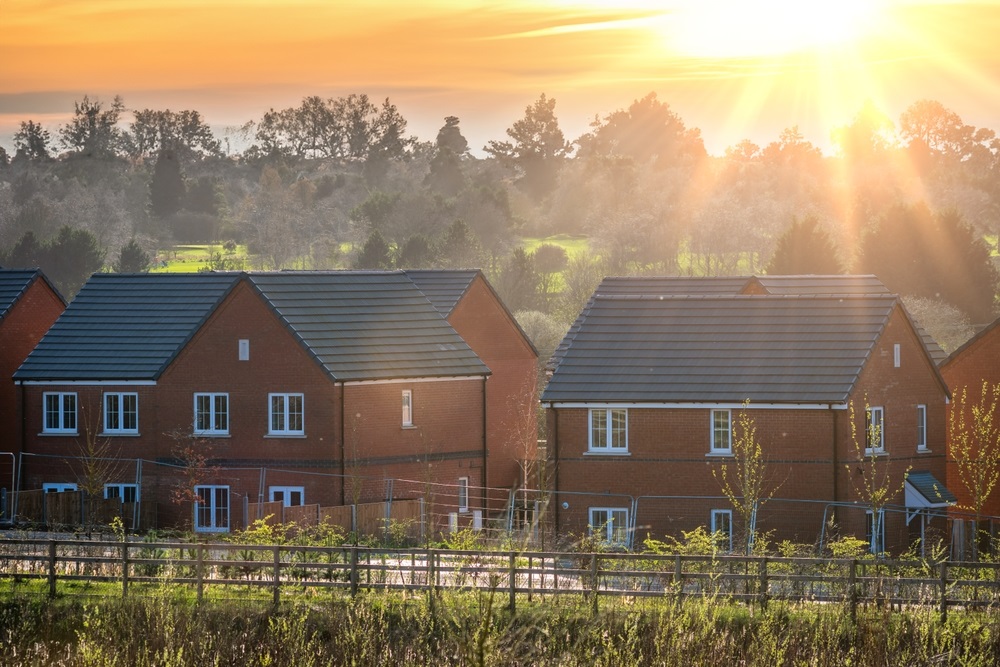A change of government is usually accompanied with a lot of uncertainty and even anxiety on the markets. The property market is no exception as historic data show there have been similar price movements in the months before and after a General Election. Vanya Damyanova reports Buyers traditionally have it easy in the months leading […]
A change of government is usually accompanied with a lot of uncertainty and even anxiety on the markets. The property market is no exception as historic data show there have been similar price movements in the months before and after a General Election. Vanya Damyanova reports
Buyers traditionally have it easy in the months leading up to the election because sellers are looking to offload their properties before people go to the polls. Otherwise they are risking having to wait for several months while the new government takes over and things settle down again.
The sellers’ rush to complete deals as soon as possible could create a temporary dip in property prices. This could be a good time for buyers to catch a bargain purchase.
As the voting day draws near though, the situation changes, and the number of property deals starts to fall. The three months before Election Day are usually marked by a slowdown in transactions. Then, the market starts to pick up again and the months after the election see an increase in prices and transaction numbers.
Although market movements may be similar, in each election year there are specific factors to influence the general sentiment. This year’s election is interesting especially for the property market as all the main parties have pledged to include housing as a key issue in their manifestos, which has never happened before.
Why address housing now?
Many speak of the looming housing crisis, affecting not only the capital but the whole country. Building supply needs to be much higher to catch up with soaring demand and the push for affordable housing is becoming stronger.
On 31 January this year, thousands of people took to the streets in London to protest about unbearably high rents and to call for a radical change in the city’s housing policy.
The Homes for Britain coalition, which includes organisations representing every corner of the housing world, is launching a large-scale campaign to raise awareness about the UK housing crisis and is calling a massive rally on 17 March.
Coalition members, such as the National Housing Federation, the Chartered Institute of Housing, the National House Building Council (NHBC), the Home Builders Federation and The Royal Institute of British Architects, say too little has been done since the push for change in 2010.
Efforts at the last General Election five years ago did not manage “to capture the public imagination” and the housing crisis did not become something real for voters to make them recognise the issue as an important political one, Homes for Britain says. This year it plans to do things differently, hoping to achieve better results.
As much as 16 per cent of UK tenants and 17 per cent of first-time buyers say housing could be a vote changer for them, according to the latest First Time Buyer Opinion Barometer from estate agents Your Move and Reeds Rains.
Key issues of influence
There are several issues the parties are expected to address and which could influence housing market sentiment and developments in the run-up to the General Election.
Housing construction
The demand for residential housing widely outstrips the number of homes built annually. Voices within the industry say any kind of government support would be welcome.
“Whilst the overall growth last year is to be welcomed, we are still building below the levels seen before the economic downturn and below what this country needs. With the General Election just two months away, it is therefore very encouraging that housing remains a top priority for all the main parties,” NHBC chief executive Mike Quinton commented at the presentation of the organisation’s housing registration statistics for 2014.
The NHBC data show that registrations, which are indicative of house-building activity, grew by an annual 9 per cent to 145,174 in 2014, nearing the average of the past four decades (153,000). This year, the number is expected at around 150,000 and, according to Quinton, a target of 200,000 per year is realistic for the future.
Help to Buy
An extension of Help to Buy (see page 32) or the introduction of a similar scheme is considered necessary by many. Help to Buy, launched in the second quarter of 2013, has had a very positive impact on both transactions and construction numbers. NHBC’s data show a 28 per cent annual jump in registrations in 2013, chiefly as a result of Help to Buy.
While the industry does not see itself as dependent on the scheme, it still provides much needed support to homebuyers, especially for those making a house purchase for the first time. Help to Buy’s positive impact is said to have caused the significant increase in first-time buyer numbers in 2014, which was the highest since 2007.
Although far away from pre-crisis levels, the rising number of first-time buyers last year has had a big impact on the market as a whole, helping it to a healthy growth rate.
If the government wants to see homeownership in this country grow, it has to continue providing some kind of support to first-time buyers, John Tutte group chief executive of Redrow Homes commented when asked whether a new government is expected to seek a more permanent solution than Help to Buy.
There is data to support such comments. The Your Move and Reeds Rains barometer found that 68 per cent of first-time buyers consider initial deposits the biggest block on the road to home ownership. The latest Land Registry data show that in its first 21 months of existence (to 31 December 2014) there were 41,533 homes purchased via the Help to Buy equity loan scheme, 83 per cent of which by first-time buyers.
Buy-to-let
Labour has been under pressure to deliver on its election promise of allowing councils to impose bans on people buying new homes to let out. Activists from Civitas call for extension of such bans to all homes in designated areas. If this indeed happens, the buy-to-let market could be hit and with these investments in the lettings sector could plummet and many buy-to-let landlords may withdraw from the market.
Mortgage availability
After the introduction of the Mortgage Market Review (MMR) in April 2014 lenders may have to cope with more stricter rules from the Bank of England. The Bank’s financial policy committee aims to get more control over the loan-to-value ratio, or how much lenders are allowed to loan in relation to the value of the property being purchased. Considering that the introduction of the MMR slowed mortgage lending to a crawl for several months last year, a change in Bank of England rules could also have a significant impact on mortgage availability.
Mansion Tax
As Labour and the Liberal Democrats are both planning to impose a tax on residential properties valued above £2 million, the market is already reacting with price cuts for properties worth between £1.7 million to £2 million.
Scotland’s market will be affected for certain as a similar tax will be introduced there this April, only a few weeks before the election.
The Scottish government will replace Stamp Duty Land Tax with the new Land and Buildings Transaction Tax, which is targeting high-end properties. For properties priced between £325,000 and £750,000 the tax will be 10 per cent and will jump to 12 per cent for values over £750,000.
Social housing
Although people are often stigmatised for living in social housing, the population is not opposed to expanding such projects, recent research from the Fabian Society, Britain’s oldest political think tank, has found.
One often-cited reason for the Conservative government’s failing to supply the country with enough homes is that there is wide public opposition against social housing, the Fabian Society says, and argues this is just not true in today’s society.
The Silent Majority research, found that new social housing in the UK is a popular idea, with only 15 per cent of people opposing and a clear majority of 57 per cent in favour of it.
The public are aware serious housing problems have to be tackled and a wide majority (87 per cent) believes the government could do a lot to help. A new wave of social housing is just one of those things.
[box style=”0″]
Political promises
The Conservatives promise to provide more opportunities for custom- and self-builders, linked to a new Right to Build scheme (see p22). They are also supporting measures along the lines of schemes and initiatives helping people into homeownership.
Labour has set the goal of raising the house building number to at least 200,000 per year by 2020 and doubling the number of first-time buyers. The party is planning to provide incentives for housing construction by local authorities and remove barriers for them to do so. It also wants to impose a so-called mansion tax on high-end properties valued at £2 million and above. For the private rented sector, Labour calls for the introduction of three-year tenancies and a cap on rent increases.
The Liberal Democrats are promising to set up a long-term housing plan in the first year of their mandate and have said they would aim to raise housing construction numbers to 300,000 per year and take measures to provide more public land for the building of new homes. The party also supports “family friendly” tenancies and measures for reducing the number of empty and second homes. If it comes in power, it would impose a tax on residential properties valued higher than £2 million as well.
[/box]














